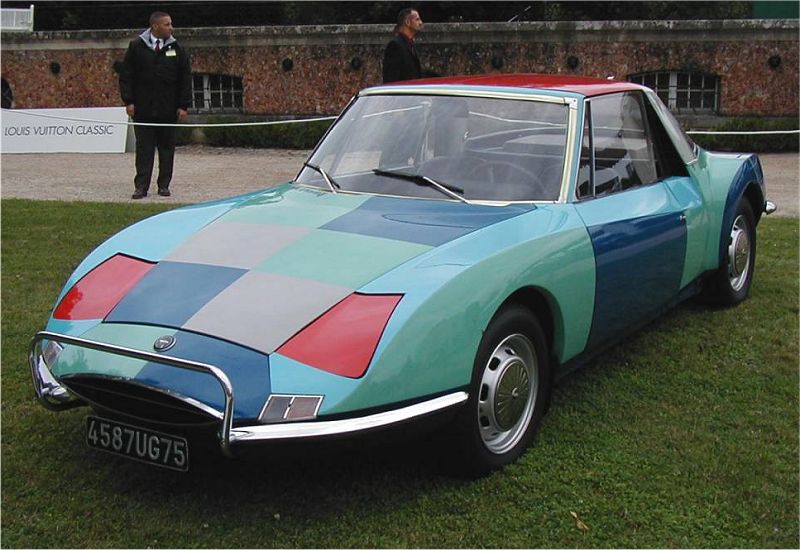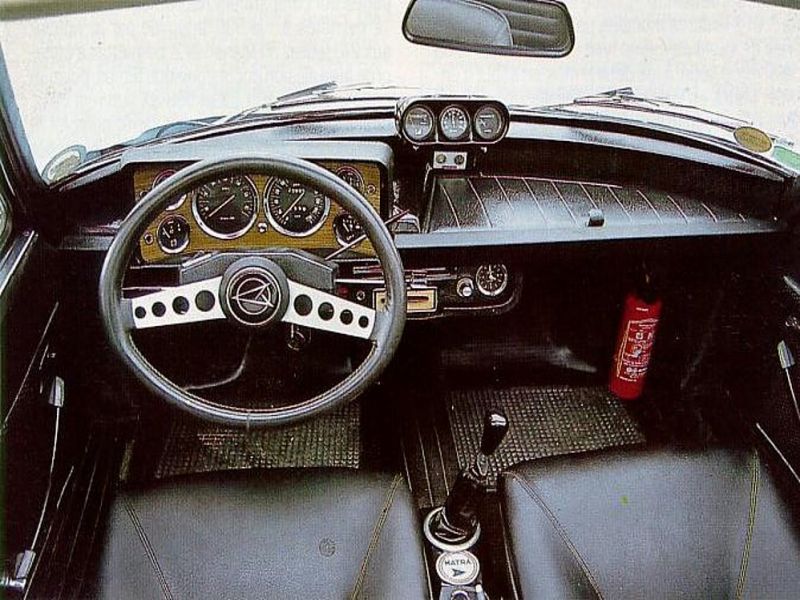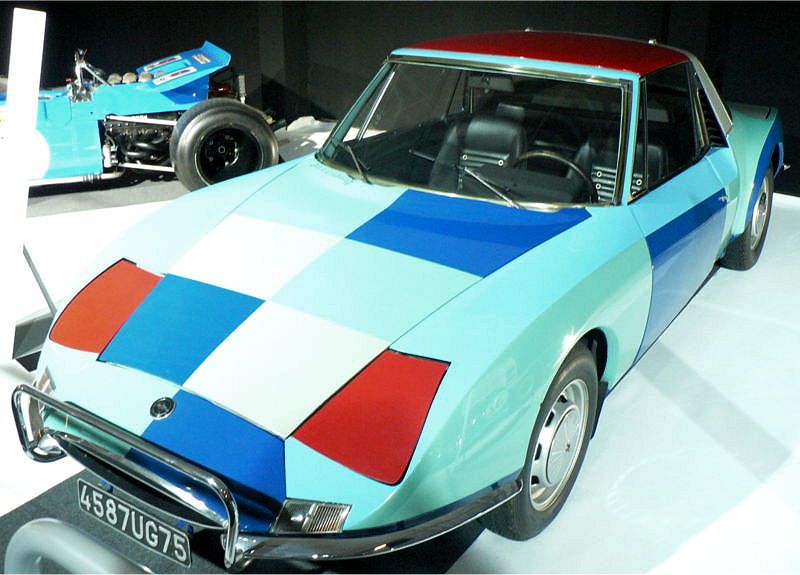Description
The Matra M 530 A, introduced in 1967, was the first true Matra-designed production road car — a clean break from the earlier René Bonnet–derived Djet and the beginning of Matra’s own distinctive design philosophy. Where the Djet had been a compact, racing-inspired mid-engined coupé, the 530 A was conceived as a more practical, comfortable and versatile “voiture des copains” — a car for friends, for leisure and for modern family life, but still maintaining Matra’s innovative engineering spirit.
Named after the Matra 530 military missile, the M 530 A was a bold, unconventional sports 2+2 unlike anything else in late-1960s Europe. It offered mid-engine balance, striking styling, removable roof panels and seating for four, wrapped into a light, compact package aimed at a wider audience than the hardcore Djet ever reached.
The M 530 A used a newly developed steel backbone chassis, an evolution of the central-spine concept but with greater structural strength and increased cabin space. This spine carried the engine, gearbox and suspension loads, with fibreglass body panels bolted to the structure. This made the car light, easy to service and resistant to corrosion — a hallmark of Matra design. The steel backbone also allowed the wide, low floor that made the 2+2 layout feasible.
Power came from Ford’s German-built 1.7-litre V4 engine, producing around 70 horsepower. This compact, narrow-angle V4 was chosen for its short length and ability to fit transversely ahead of the rear axle. It delivered modest but adequate performance, with a top speed near 170 km/h (105 mph), but its real strength was torque and smoothness. Paired with a four-speed gearbox and combined with the car’s low mass, the V4 gave the 530 A relaxed, flexible performance well suited to touring.
Suspension was fully independent, with double wishbones at the front and coil-spring trailing arms at the rear. The mid-engine weight distribution and long wheelbase gave the 530 A secure, predictable handling. It was more softly sprung than the Djet, offering a comfortable ride and good high-speed stability, though keen drivers appreciated its well-balanced chassis. Rack-and-pinion steering provided clean, accurate feedback, and front disc brakes ensured strong stopping performance.
Styling was one of the 530 A’s most distinctive elements. Designed by Philippe Guédon and Jacques Nocher, it featured a sharply angled nose, pop-up headlights, a low beltline and a crisp roofline that flowed into a fastback tail. The proportions were unique: wide, low, compact and unmistakably mid-engined. One of its signature features was the targa-style roof with removable centre panel and rear window frame, creating an early form of open-air motoring without sacrificing rigidity. This gave the 530 A versatility unmatched by most sports cars of its era.
Inside, the 530 A offered a genuinely usable 2+2 configuration — a rarity in mid-engined designs. The cabin was airy and modern, with slim pillars and excellent visibility. The dashboard was angular and futuristic, with clear Jaeger instrumentation and intuitive controls. The rear seats were best suited for children or luggage, but their presence made the 530 A far more practical than typical two-seat sports coupés. Matra emphasised comfort and usability, making the 530 A a sports car one could drive daily.
On the road, the Matra 530 A was praised for its ride comfort, stability and confidence-inspiring manners. It was not a raw performance machine like the Djet; instead, it delivered a balanced blend of handling agility and everyday usability. Contemporary testers appreciated its relaxed touring ability, predictable balance and user-friendly ergonomics.
Production of the M 530 A lasted from 1967 to 1970, after which it was replaced by the improved M 530 LX. Early production numbers were modest as Matra refined build processes and improved quality control, but the 530 A laid the groundwork for Matra’s later road-car successes — including the 530 LX, Bagheera and Murena — all of which followed its mid-engined, practical-sports-car formula.
Today, the Matra M 530 A is celebrated as a visionary and deeply original sports car. It was one of the first practical mid-engined GTs, boldly styled, cleverly engineered and unmistakably Matra. With its targa roof, four-seat layout, advanced chassis and fibreglass body, the 530 A stands as a landmark in French automotive innovation and a foundational chapter in Matra’s unique approach to road-car design.


